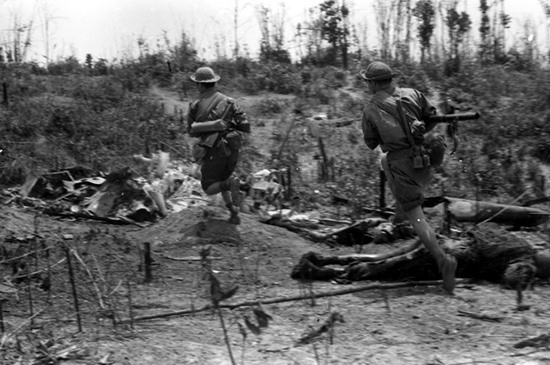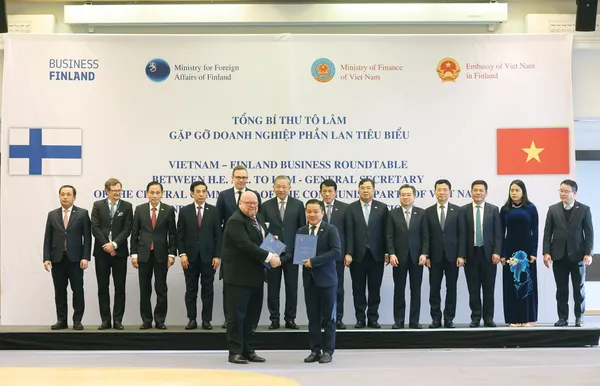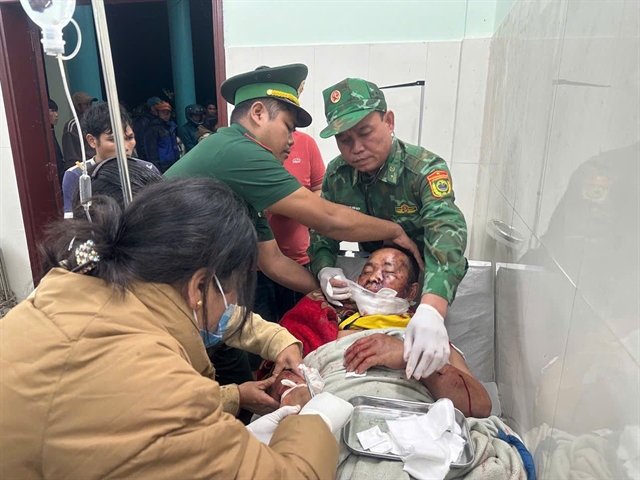 Features
Features

The 1968 Tết Offensive, also known as the Mậu Thân General Offensive, was among one of the largest campaigns during the two-decade-long American War in Việt Nam.
 |
| Charge!: Two VPA soldiers on a charge during a battle along Route 9. — VNA/VNS Photo Lương Nghĩa Dũng |
by Nguyên Lý
The 1968 Tết Offensive, also known as the Mậu Thân General Offensive, was among one of the largest campaigns during the two-decade-long American War in Việt Nam. Images of battles raging in major cities across the South were broadcasted all over the world, most memorable was perhaps the siege of the American embassy in central Sài Gòn, now Hồ Chí Minh City.
The offensive shattered the illusion, one carefully crafted by the Johnson administration that the end of the conflict was near. “We have reached an important point where the end begins to come into view,” proclaimed Gen William Westmoreland, US commander in Việt Nam in November 1967.
Meanwhile, the Việt Nam People’s Army of (VPA) and their southern brethren the National Liberation Front (NLF) were making preparation for the largest military mobilisation of the conflict until this point.
Vietnamese national liberation forces’ objectives were set to lure major regiments of the US army to the border area between Việt Nam and Laos to create opportunities for NLF units to infiltrate large cities and gear up for the general offensive.
A new theatre of war was in the making with Khe Sanh chosen as its highlight. The base’s strategic location along Route 9 allowed American forces to survey and recon movements on the Hồ Chí Minh Trail, to block VPA infiltration from Laos and to serve as an anchor for the defences south of the DMZ.
Battle of Khe Sanh
Khe Sanh was built on a former fort, a relic of the old French Indochina colonial empire. The outpost was equipped with an airfield and formerly served as an outpost for US Special Forces. By the time the VPA artillery shells were falling on the base in deafening thunder on January 21, 1968, Khe Sanh was a marine base heavily reinforced by 45,000 soldiers with artillery and air support.
The siege of Khe Sanh marked the first large-scale battle of the conflict, which the VPA had actively avoided due to American superior air support and firepower. The VPA committed three divisions: the 304th, 320th and 325th in the siege of Khe Sanh, a battle which many newspapers drew a comparison to the famous siege of the French Điện Biên Phủ fortified camp that ended the First Indochina War.
“The North Vietnamese gunners had targeted their bombardment with unerring accuracy. As US Marines had dived for cover, one of the first rounds had scored a direct hit on the main ammunition store,” according to Canadian journalist Micheal Maclear in his documentary Vietnam: The Ten Thousand Day War.
The 1,500 tons of artillery and mortar rounds, 90 per cent of the whole base’s entire stock was lost, the explosion continued for another 48 hours after. The base’s airfield also sustained heavy damage by artillery fires.
The VPA infantry units were supported with three tank companies overran US force and claim minor bases of Tà Mây, Lang Vei and Huội San. The attackers also managed to sever US defence line along Route 9 to isolate Khe Sanh and severely cut off its supply route.
At this point, the US Army was compelled to conduct massive air raid on the base’s surrounding area. On an average day some 350 tactical fighter-bombers, 60 B-52s operated in the skies. By the end of the battle, the US had dropped some 32,000 tons of bombs and ordnance in the arena.
But the VPA was determined. Despite the heavy bombing, the siege tightened around the base. Meanwhile, other offensives were taking place the entire central part of the country with liberation forces in major towns and cities including Huế and Quảng Trị took arms against American forces.
Ripple effect
Prior to Khe Sanh, liberation soldiers would only engage American forces in rural areas. Large cities remained difficult targets due to the heavy presence of American forces with far more superior firepower.
“News of our victories from Khe Sanh reinforced our determination to rise up and retake our towns from the Americans,” said Nguyễn Xuân Giang, former deputy head of military operation of the towns of Quảng Trị and Đông Hà.
Not only Quảng Trị and Đông Hà, the battle of Khe Sanh allowed the VPA and the NLF to weaken American forces stationed in Huế, the former royal capital city which hold great strategic and symbolic value, setting the stage for national liberation forces to reclaim the city.
“Everybody rose up and took arms against the Americans, both in the cities and the countryside. We managed to break through a prison in the town of Quảng Trị, where they held many of our comrades,” said Nguyễn Quang Dõng, a combat medic who took part in the battle to retake Quảng Trị.
By the time Khe Sanh made the headline of major newspapers around the world and came under the spotlight of US politics, the Tết Offensive preparation was completed. The National Liberation forces were ready to stage the largest military offensive throughout the South in both rural areas and major towns and cities, a campaign that many historians later believe it was the turning point of the American War in Việt Nam. — VNS
*This is the first part of a two-part article on the 1968 Tết Offensive. The next part will be published on our Sunday, January 28 issue.




